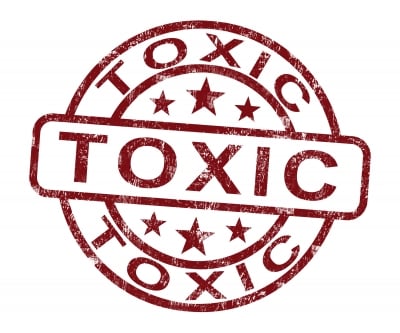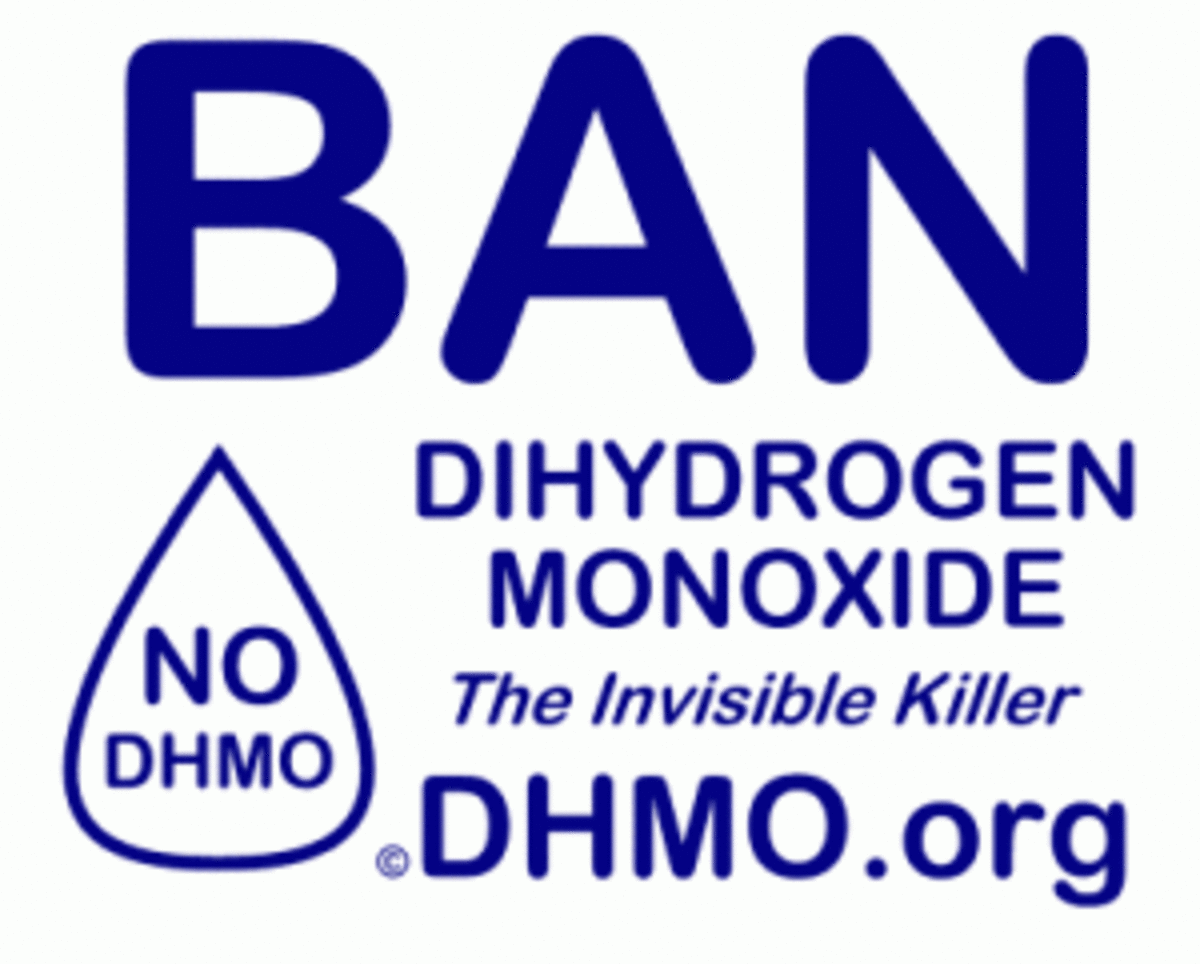Toxic Fire Retardants Widespread in Everyday Products ~ Minimize Exposure for Your Family

How Are We Exposed to Flame Retardants?
Flame retardants are in products we use everyday at home, in the office and at school. They are added to products with the intent to reduce the incidence of fire, but have been proven to be toxic to our health. As with any toxin, the possible routes of exposure are inhalation, ingestion or absorption. With fire retardants, we are exposed through every possible route, causing a variety of health effects including birth defects, cancer, learning and fertility issues. Americans have 10 to 40 times more flame retardant chemicals in their bodies compared to Europeans. Once again, Europe has stood up for what is right by their citizens and banned most flame retardants. Learn what products contain fire retardants and how to minimize exposure, especially for children who are at greatest risk.
Copyright © 2020 Melis Ann
What Health Risks are Associated with Exposure to Flame Retardants?
There is a high level of risk for negative health effects from fire retardants because:
- their use is widespread
- safety testing is not required and
- most people are unaware of the level of their exposure
Proof that U.S. families are unknowingly exposed in an Environmental Working Group study:
- 19 out of 20 U.S. families tested positive for exposure
- 11 different flame retardants detected in the children tested
- in 86% of cases, the children in the family had higher levels of fire retardants than the mothers
According to over 150 prominent scientists across 22 countries, fire retardants pose more of a health risk than the fires they are promoted to protect against. In 2010, these scientists signed The San Antonio Statement which describes the link between exposure to fire retardants and health effects such as cancer, fertility problems and learning disorders.
Other possible health effects include thyroid disorders, hyperactivity, behavioral changes, hearing and memory problems, birth defects and skin irritation.
Discovery News reports that women with high levels of flame retardants in their blood stream took longer to get pregnant. They also report that babies born with higher levels of flame retardants present in their blood stream scored lower on developmental tests.

Inhaling Fire Retardants
Since fire retardants are a major component of dust, we are inhaling them. Present in all homes is dust containing chemicals like flame retardants, pesticides and heavy metals. When dust is disturbed by walking across the floor, or even during the cleaning process, these chemicals get redistributed into the air for us to breath in. It's difficult to measure the actual exposure level, but dust control would helpful in minimizing the issue.
A 2009 study published in Environmental Science & Technology showed that flame retardants are prevalent in house dust in U.S. homes. They site the need for further study into health effects from dust exposure on children. Published in 2011, it is the first study to reveal the prevalence of flame retardants in baby products containing polyurethane foam. Environmental Science & Technology published the conclusion that infants that use products that contain flame retardants have a higher exposure than the government recommends is safe and that infants are more susceptible to ill health effects from that exposure.
We are also breathing flame retardants as gas. Electronics that contain these chemicals, like TVs and computers, are off-gassing as they are used. The user breaths in these chemicals and absorbs them into the body.

Ingesting Fire Retardants
When small particles of flame retardants become loose, they stick to dust and oily fingertips. In an office setting it's easy to see how typing on a keyboard while eating lunch can lead to ingestion of flame retardants. Children and babies ingest flame retardants that become stuck to their hands and toys from playing on the floor where house dust settles. A Boston University School of Public Health study found flame retardants in the dust samples in every office tested. They also found a relationship between the amount of flame retardants swiped from worker's fingertips and the amount present in blood samples.

Absorption of Fire Retardants
Back in 1978, scientists knew that flame retardants in children's pajamas were being absorbed from the fabric.
Today, we have fire retardants in mattresses, pillows, furniture and many baby products where we are coming into contact with fabrics treated with these chemicals. The chemicals can reportedly leach through sheets, other fabrics and even plastic coverings and be absorbed by the skin. The skin is a pathway to the blood stream and all the inner workings of the body.

What Everyday Products Contain Flame Retardants?
Many times the labels will carry the statement that a product is considered flame resistant in accordance with California law such as "This article meets the flammability requirements of California Bureau of Home Furnishings Technical Bulletin 117." Recently, some nursery products such as strollers, nursing pillows and baby carriers have recently been exempted from following the flammability standard. Since labeling of flame retardants is not required, it may be difficult to determine if a product contains the chemicals.
- polyurethane foam in car seats, high chairs, and nursing pillows
- strollers, baby changing mats
- carpeting and carpet padding
- automobile cushioning
- drapery fabric/window treatments
- children's pajamas
- furniture: sofas, love seats, arm chairs
- food (environmental contamination)
- bedding such as pillows, mattresses and futons
- electronics such as remote controls, cell phones, TVs, computers
- small appliances such as hair dryers
- building materials such as textiles, lighting, wiring, paints
To minimize exposure from these sources refer to the section below titled How to Minimize Exposure to Flame Retardants.

Fire Retardants Not Effective?
The benefit of fire retardant chemicals is in question. California is the only state that requires that children's furniture and and other upholstered products withstand a 12-second open flame. Because of this law, many products available in the U.S. are manufactured to meet this requirement. Studies show that furniture manufacturers could meet the requirement without chemicals (by making use of certain fabrics that are less flammable), but do not follow this path due to the California law requiring the use of flame retardant chemicals.
The theory (of those not tied to the chemical industry) is that more lives can be saved from fires with more time spent in fire education and prevention. The most common source of house fires is a burning cigarette. Promoting safety by using smoke detectors and not smoking in bed minimizes the risk of fire while avoiding chemical exposures to products permeated with toxic flame retardant chemicals. In fact, when flame retardants burn, they release toxic smoke, including carbon monoxide.

Fire Retardants Are Contaminating Our Food and Environment
It's a simple case of environmental contamination. Chemicals that are meant to be contained in wall insulation and foam in furniture migrate out into the world. The dust from these products travels into the air, soil and water. Eventually, the chemical is part of the food chain via marine life and livestock grazing on contaminated crops. It ends up in our foods such as butter, peanut butter and meat. Although at levels still considered "safe" in common foods in our grocery aisle, the contamination will build beyond safe levels unless we stop using these products.
Another source of environmental contamination is the use of fire retardant chemicals to put out wildfires. Fire retardants are dumped in huge quantities on wildfires to help put them out. These chemicals invade the landscape affecting air, water and soil quality.

Why Phasing Out Flame Retardants Isn't Enough
Polychlorinated biphenyls (PCBs) were banned in the 1970s and polybrominated diphenyl ether (PBDEs) took their place. Since then, PBDEs have been banned and replaced by chorinated Tris, which has now been shown to be carcinogenic. History has shown that, as soon as one chemical is banned, a replacement chemical is used to fulfill it's purpose. There may be even less safety information available for the replacement chemical which could pose a greater health risk. It really shouldn't be a surprise that these chemicals have all been discovered to be toxic since all of them are part of the same group of halogenated chemicals. Further banning and replacement won't lead to a healthier situation.
According to the Chicago Tribune, representatives in the chemical industry hired a burn surgeon to testify before state legislature in favor of flame retardants based on falsified accounts of child burn victims. Their objective was to kill legislation geared to ban harmful cancer-causing chlorinated Tris flame retardants. Chlorinated Tris was banned from children's pajamas back in the 1970s due to toxicity concerns. Because only pajamas were specified in this ban, manufacturers have continued to use chlorinated Tris in many children's products sold today. According to Environmental Science & Technology, 80% of children's products contain flame retardants where the most common flame retardant used is chlorinated Tris.
Chlorinated Tris has been identified as a cancer risk by multiple agencie including the National Research Council, Federal Consumer Product Safety Commission and the National Cancer Institute. The California Environmental Protection Agency declared chlorinated Tris a carcinogen in 2011.
Even after a ban on a particular flame retardant, these chemicals will persist in our homes and the environment. Furniture and electronic products containing the banned chemical have long life spans in our homes. Avoiding products that contain fire retardants and minimizing our exposure otherwise is our best bet to avoiding the unknown and known health risks.
Home Air Exchanger
Organic Cotton Baby Pajamas
Kids PJs Without Flame Retardant
Baby PJs Without Flame Retardant
How to Minimize Exposure to Fire Retardants
Minimize is the key word here. Knowing that it is impossible to eliminate exposure to flame retardants, we need to be smart about controlling it.
HEPA Filters: Use a vacuum with a HEPA filter and HEPA rated vacuum bags. HEPA is the efficiency of filtering particles from the air. You want the smallest dust particles and contaminants to stay in the vacuum bag once they are vacuumed up from the environment. Be sure to clean frequently.
Children's Pajamas: If you choose to avoid sleepwear treated with flame retardant chemicals, look for natural fibers and snug fitting sleepwear. Although PBDEs are not used, other flame resistant chemicals are still being used on children's PJs. Synthetic fabrics meant for sleepwear are treated with chemicals, whereas some cotton sleepwear may not be treated and would be labeled as "Wear snug-fitting, not flame resistant". A snug fit reduces the flammability of the product and certain fabrics are inherently fire resistant. Some fabrics, like loose fitting flannel pants for older children, may be labeled “Not intended for sleepwear”. This labeling means the product does not meet flammability requirements and is not likely treated with flame resistant chemicals. Labeling of clothing is not always straight forward: a product may not be treated with flame retardants after it is made, but could be constructed with fibers that incorporate the chemical. There are many brands, like Hatley and Under the Nile, that sell cotton PJs without flame retardants.
Mattresses: Encase mattresses in a dust cover to keep it clean from outside contamination and keep dust from the mattress from escaping. Some say that mattresses are not a source of dust since foam is encased, however, if exterior fabrics are treated then they may be a source of absorption exposure. Covering the mattress may not address the chemicals leaching through the encasement to be absorbed by the skin. Organic and wool mattresses, although reported to not be treated by chemicals, still must pass flammability codes, and may be treated with flame resistant chemicals. Any claims of "chemical-free" should be verified by contacting the manufacturer. A chemical/flame retardant free mattress would be ideal. It's possible to have a doctor write you a prescription for a chemical-free and/or wool-free mattress without flame retardant chemicals, but you may find other options. This is an area which would require in-depth research, but a quick search online reveals one possible option: Earthsake mattresses.
Washing Hands: Washing your hands has been shown in new research reported by Discovery News to significantly reduce blood levels of flame retardants. Especially important before eating and after using any electronics or playing on the floor.
Inspect Foam: Check upholstered furniture and mattresses to ensure that foam is not exposed. Foam should be encased in protective fabric to prevent breakdown of foam and spread of dust. Furniture made before 2005 likely contains PBDEs which are known to be highly toxic (not that newer furniture will turn out to be less toxic).
Natural Latex: Products containing natural latex, including mattresses and pillows, are likely treated with flame retardants since natural latex is a flammable material. Avoid these products if they have been treated for flame resistance.
Keep Electronics Away from Children: Never let young children mouth cell phones, remote controls or any other electronic device. These items are not toys so making a habit of not letting young children play with them will prevent hand to mouth contact.
Wash Tabletops for Eating: We often use the same tabletops for laptops and other electronics that we use for eating our meals. Washing the tabletop will keep it clean of fire retardant dust and residue.
Home Remodeling/Recovering Furniture: Be cautious of removing old materials from the home like carpet padding or reupholstering furniture as many older products contain flame retardants that are now known to be carcinogenic or highly toxic.
Choose Hard Flooring: Carpeting harbors dust and contaminates deep within the fibers. Even though it may seem like hard flooring needs a more frequent cleaning to keep control of dust, it is a cleaner environment. Use a wet mop on a regular basis as a finishing touch.
Indoor Air Quality: Be sure to open windows and use ventilation systems that draw fresh air from the outside environment. Exchanging air that has accumulated flame retardant chemicals as gas will reduce exposure.
Copyright © 2020 Melis Ann
Original content written by Melis Ann published only on HubPages at the following web address: http://melisann.hubpages.com/hub/Toxic-Fire-Retardants-Widespread-in-Everyday-Products-Minimize-Exposure-for-Your-Family
Take Action - Sign for Safe Chemicals Act
Tell your senator that you want a Safe Chemicals Act to be passed in 2012 to require that chemcials are proven safe before being put in our everyday products.
We Need to be Chemical Free
We need to be able to buy furniture, bedding, baby products and toys that are free of added chemicals like fire retardants. We need our governments to be looking out for the well-being of the public and for politicians to stand up against big business pushing legislation requiring use of their chemical additives. The New York Times published an article outlining the real reason flame retardants have invaded our everyday lives: decades ago the tobacco industry pushed for fire retardant furniture because it didn't want to develop fire safe cigarettes. Consumers have the power to demand products without fire retardants and we are all smart enough to understand that continuing this kind of careless, unhealthy behavior is unacceptable. We should be reducing the use of fire retardants in everyday products and protecting our children from the associated health effects.
© 2012 Melis Ann













